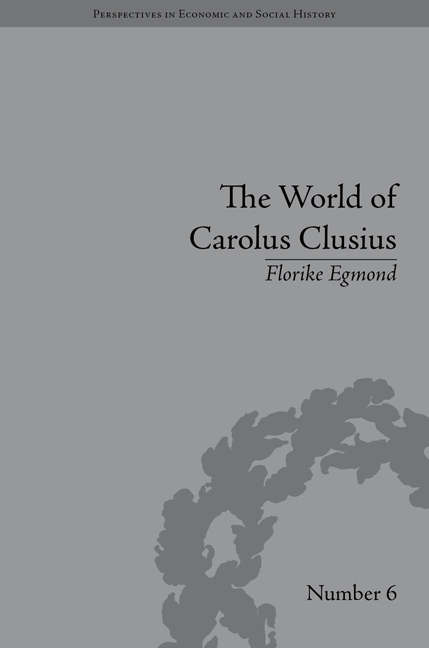Book contents
- Frontmatter
- CONTENTS
- Miscellaneous Frontmatter
- Preface
- Technical Note
- Abbreviations
- List of Figures
- Introduction
- I The Southern Netherlands
- II Habsburg Women
- III Italy
- IV France
- V Holland
- VI Beyond Place
- 11 Interlocking Networks: London and Amsterdam
- 12 Spanning the World: Dealing with Exotics
- Conclusion
- Notes
- Works Cited
- Index
11 - Interlocking Networks: London and Amsterdam
from VI - Beyond Place
- Frontmatter
- CONTENTS
- Miscellaneous Frontmatter
- Preface
- Technical Note
- Abbreviations
- List of Figures
- Introduction
- I The Southern Netherlands
- II Habsburg Women
- III Italy
- IV France
- V Holland
- VI Beyond Place
- 11 Interlocking Networks: London and Amsterdam
- 12 Spanning the World: Dealing with Exotics
- Conclusion
- Notes
- Works Cited
- Index
Summary
In 1592 the elderly apothecary and merchant in drugs and spices James Garet Sr (also Jacques Garret; 1519/20–c. 1594) wrote to Clusius from London that he had just returned from a trip of some nine weeks to the Northern Netherlands. He had paid a visit to their mutual friend Johan van Hoghelande in Leiden, and seen a double red ranunculus in his garden, but Hoghelande did not want to share it: ‘he is so tight-fisted that I could not get it out of his hands, patience’ (J. Garet Sr, 27 July 1592). Garet also referred to tamarind ‘as it grows in its pods in some places in Calicut’, exotic leaves and beans, and some very small melons – ‘very green and with small white spots, like the coloquint’– which he had received from abroad; they had been so fresh that Garet had planted their seeds in his garden in London, where they had sprouted, so he hoped the two plants would bear fruit.
Garet was the father of James Garet Jr (also Jacques Garret; c. 1552/5–1610) and Pieter Garet (c. 1552/5–1631), two men whom Clusius regarded during most of the 1580s, 1590s and early 1600s as among the most important persons in Europe where access to and information about exotic naturalia was concerned.
- Type
- Chapter
- Information
- The World of Carolus ClusiusNatural History in the Making, 1550–1610, pp. 175 - 190Publisher: Pickering & ChattoFirst published in: 2014



